Photo-Eye: New Photobook Acquisitions in Special Collections
The first of a two-part series, by Dr Natalie Adamson, highlighting some recent acquisitions in support of the new Photographic Books Collection at the Department of Special Collections
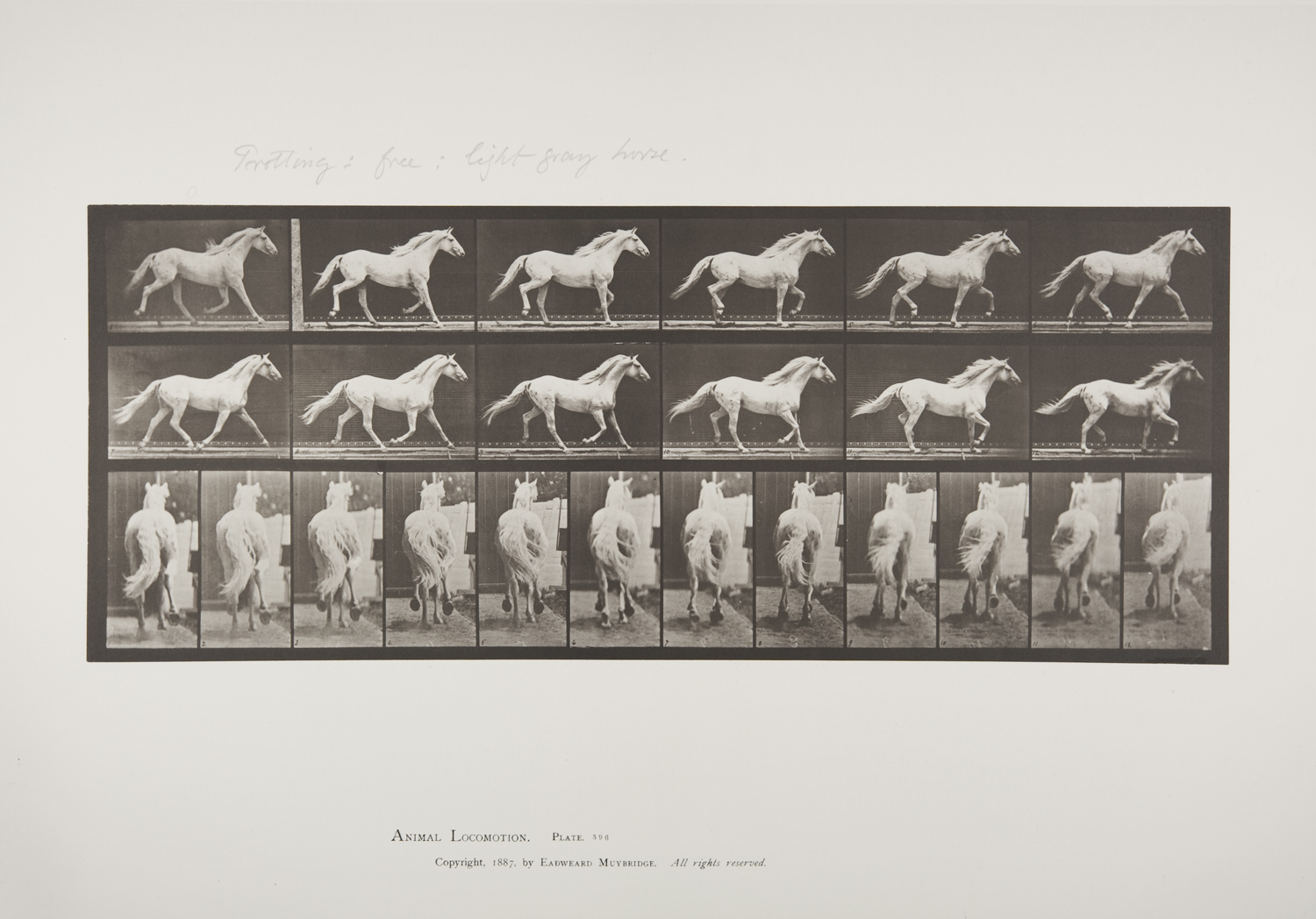
Slipping between the protected library archive of ‘rare books’, piled into the open shelves of art and photography books, or simply going unperceived as photographic illustration within a miscellaneous variety of scientific, artistic and periodical publications, the University Library has recently and seriously turned its attention to what is increasingly seen as an independent category – photographic publications – and even a medium in its own right, the photobook. Slowly, over the course of the twentieth century, the photobook has been validated as an object, or even a medium, meriting its own special attention from photographers, designers and collectors, and now, from historians. To this end, some exciting new acquisitions were made in 2011 which complement existing holdings in the area, which include such important nineteenth-century items as W.H.Fox Talbot’s The Pencil of Nature (1844), Etienne-Jules Marey’s Physiologie du mouvement: le vol des oiseaux (1890) and Eadweard Muybridge’s Descriptive zoopraxography, or, The Science of Animal Locomotion made popular (1893), and for the twentieth-century, significant masterworks such as Karl Blossfeldt’s folio volume of 120 full-page plates depicting stylised plantforms in crystal sharp detail close-ups, Urformen der Kunst (1928).
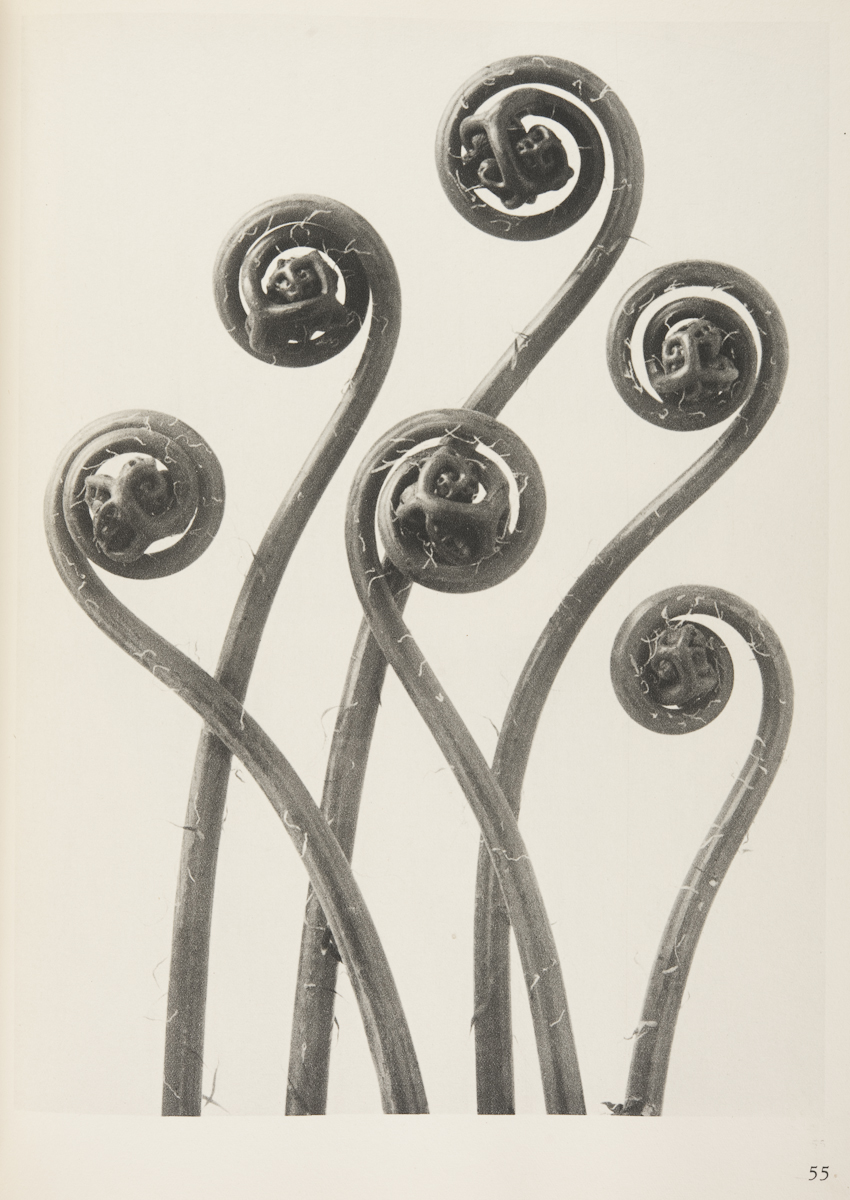
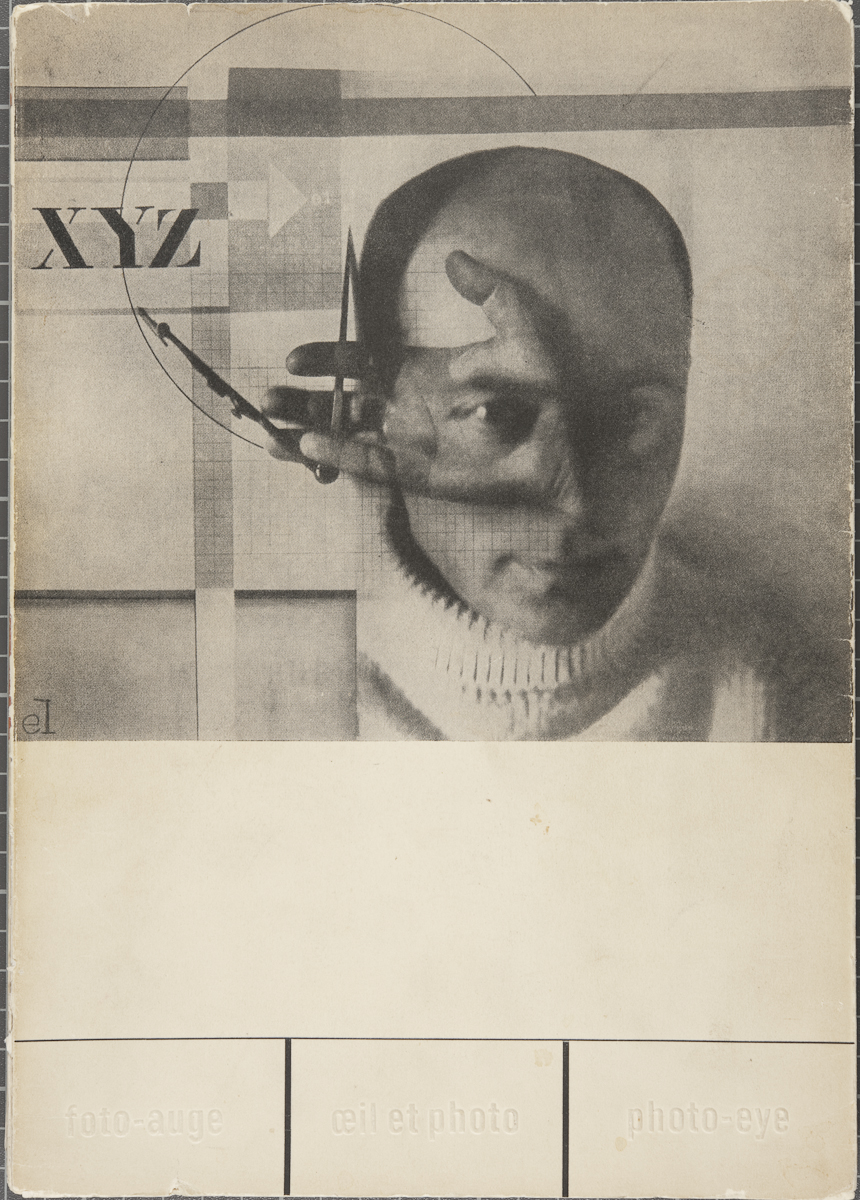
Each photobook promises a rich field of inquiry for researchers, including scholars with specialist interests or students in Art History, Film, History or Modern Languages. Amongst the many narratives which can be traced is that of modern life itself, celebrated by the post-Cubist painter and sometime filmmaker Fernand Léger as “often in a state of contrasts” (1923). Léger’s montage film, Ballet mécanique, added to the trail-blazing publicity for photography of Lázló Moholy-Nagy and El Lissitzky, influenced a generation of European artists to turn their skills towards photography. For an exhibition summation of the influential developments in modern photography, see the landmark catalogue foto-auge, oeil et photo, photo eye, by the photography critic Franz Roh and the designer Jan Tschichold, Stuttgart 1929, classed by Martin Parr and Gerry Badger in their inventory, The Photobook: A History, vol.1 (Phaidon, 2004) as a photobook in its own right, and another vital acquisition for Special Collections.
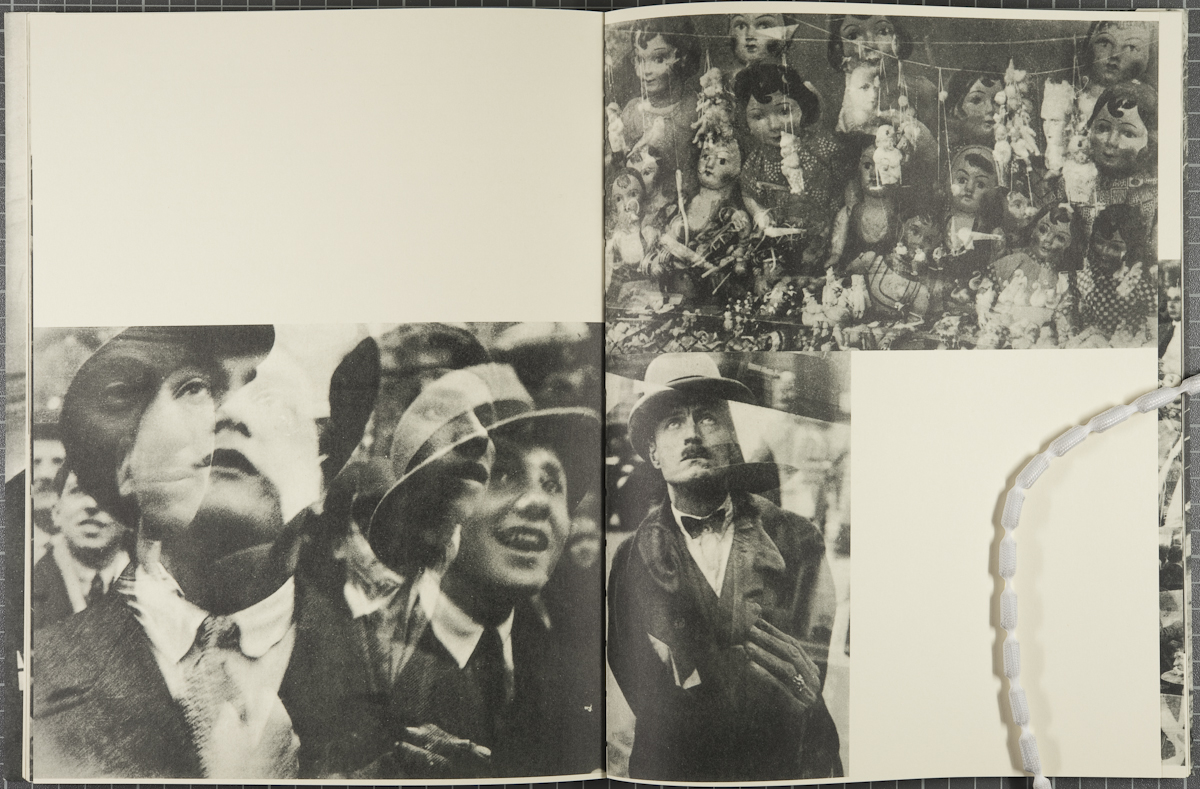
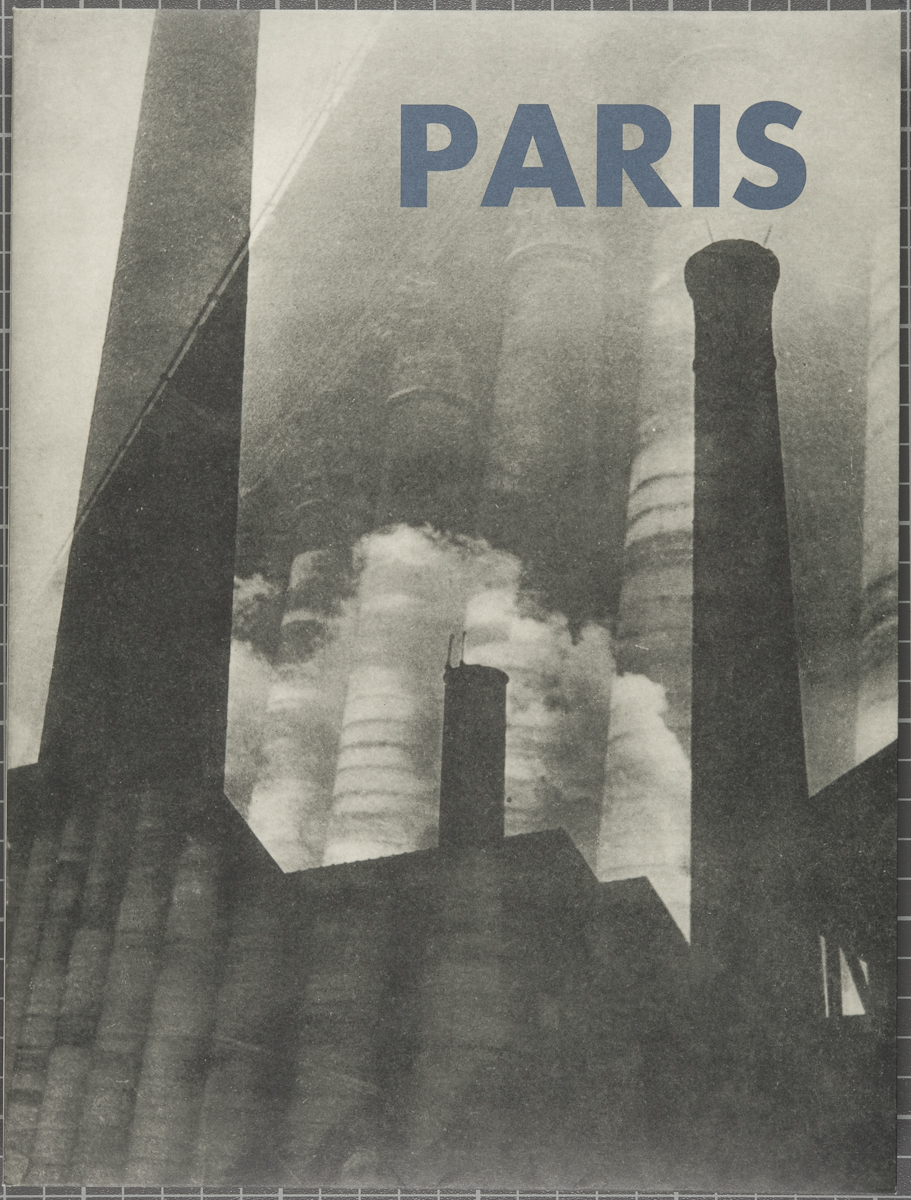
A significant cluster of the photobooks focus the camera-eye on the city of Paris as their subject. Moï Ver’s extraordinary book of 80 black and white photographs simply entitled Paris, published in an edition of 1000 copies in 1931 and in a deluxe facsimile by Steidl in 2009 (acquired by the Library), is exemplary of this exhilarating trend: the front cover alone juxtaposes the smokestacks of factories vertiginously looming against a classical stone façade. Ver (born Moshé Raviv-Vorobeichic in Lithuania) unhesitatingly and cinematically blends the ancient with the modern, art and industry in his full-page montages, where the dynamic modern city takes shape before our very eyes. Ver’s book fulfils the lauding of photomontage by Raoul Hausmann in 1931, where the Dada impresario observed how the “material of photography” was used “to combine heterogeneous, often contradictory elements, figurative and spatial, into a new whole […] as new to the eye as it was to the mind.” Pointing to the significance of ideological positions in interwar modernism where photography had to be held to account for its education of the eye and the mind, Ver’s montages are a stark contrast to the snapshot-style, blunt-edged documents of a less glamorous, impoverished Parisian street life taken with a hand-held Leica camera by the Soviet writer and photographer Ilya Ehrenburg and compiled into a photobook entitled My Paris (1933), with book design and two montages by El Lissitzky and layout by Alexander Brodsky. The Steidl facsimile edition (2005) of this small-format, little-noticed photobook is one of a growing number of new editions available at more affordable prices which now accompany the unique first editions and facilitate access by students to such objects.
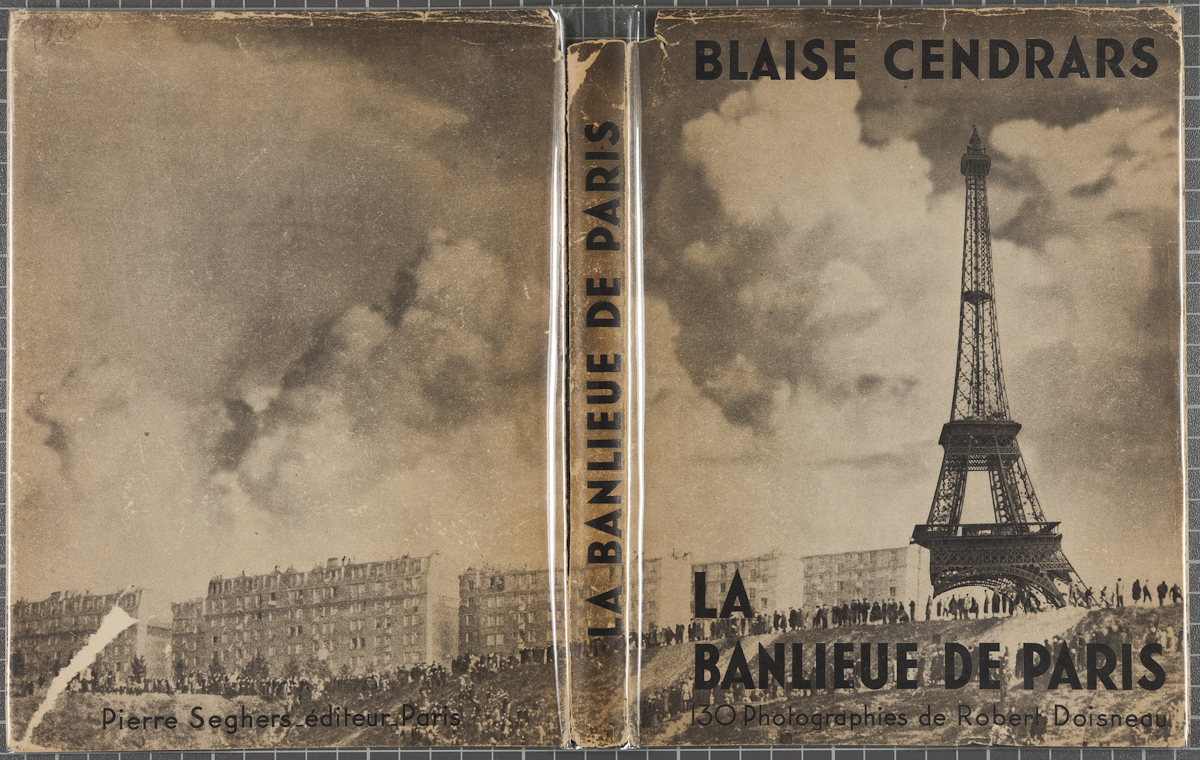
A different kind of montage provides the photographically illustrated dustjacket for Robert Doisneau’s La Banlieue de Paris, acquired from the first edition run of 1949. Several separate images – a row of forbidding high-rise apartment blocks, a long line of people spread out along a hillside spectating an unseen event, and the Eiffel Tower rising up against a cloudy sky – combine to bewilder the viewer, as does the name of Blaise Cendrars – the renowned avant-garde writer and adventurer – in large bold type on the front cover. Now more famous than his friend and author of the introduction, Doisneau’s bittersweet observations of Parisian streetlife and local events such as the bicycle race through a quarry in his home suburb of Gentilly which features in a double-page spread within (when we see it, we realise that this was one element of the cover montage), inaugurate a new epoch of photobook creativity. A modern-day reincarnation of the roving urban wanderer, the photographer as flâneur searches out the signs of the collision between old and new in the city streets and back alleys, the revelations of the hidden and secretive lives of its anonymous inhabitants, as well as moments of everyday life seized out of time’s continuum, with a tender empathy.
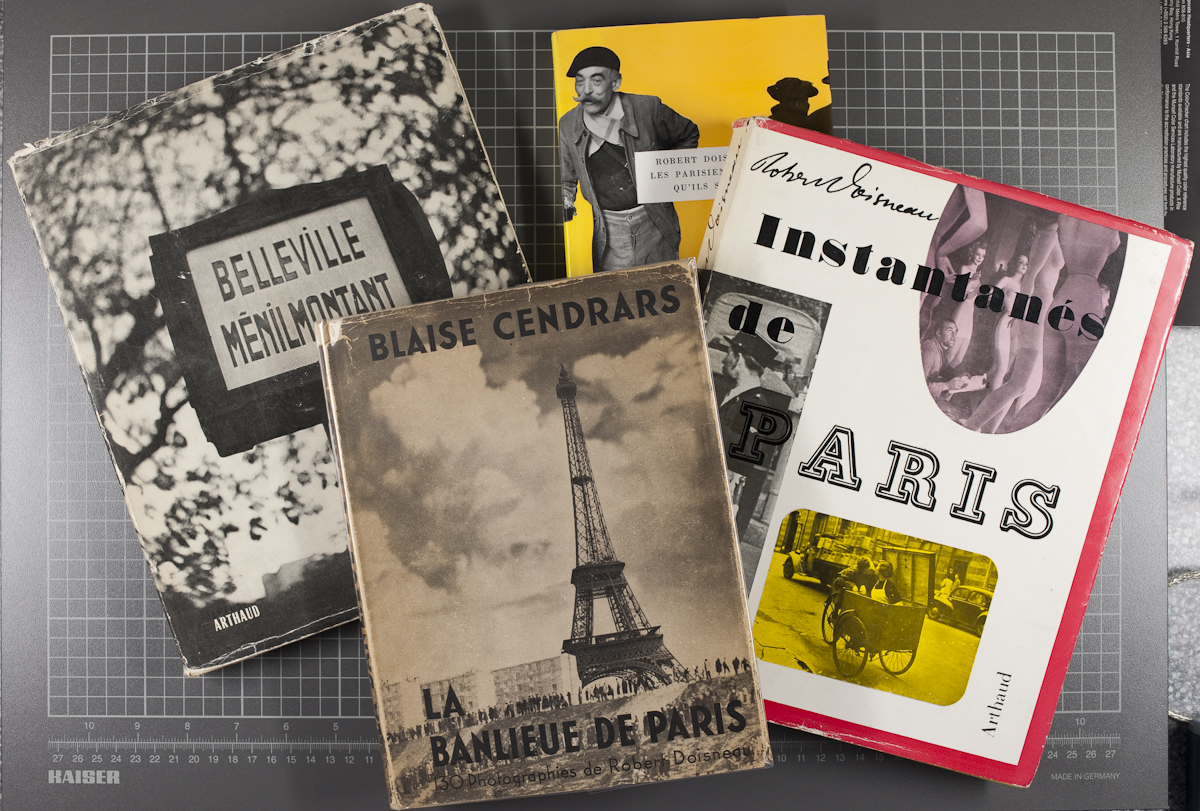
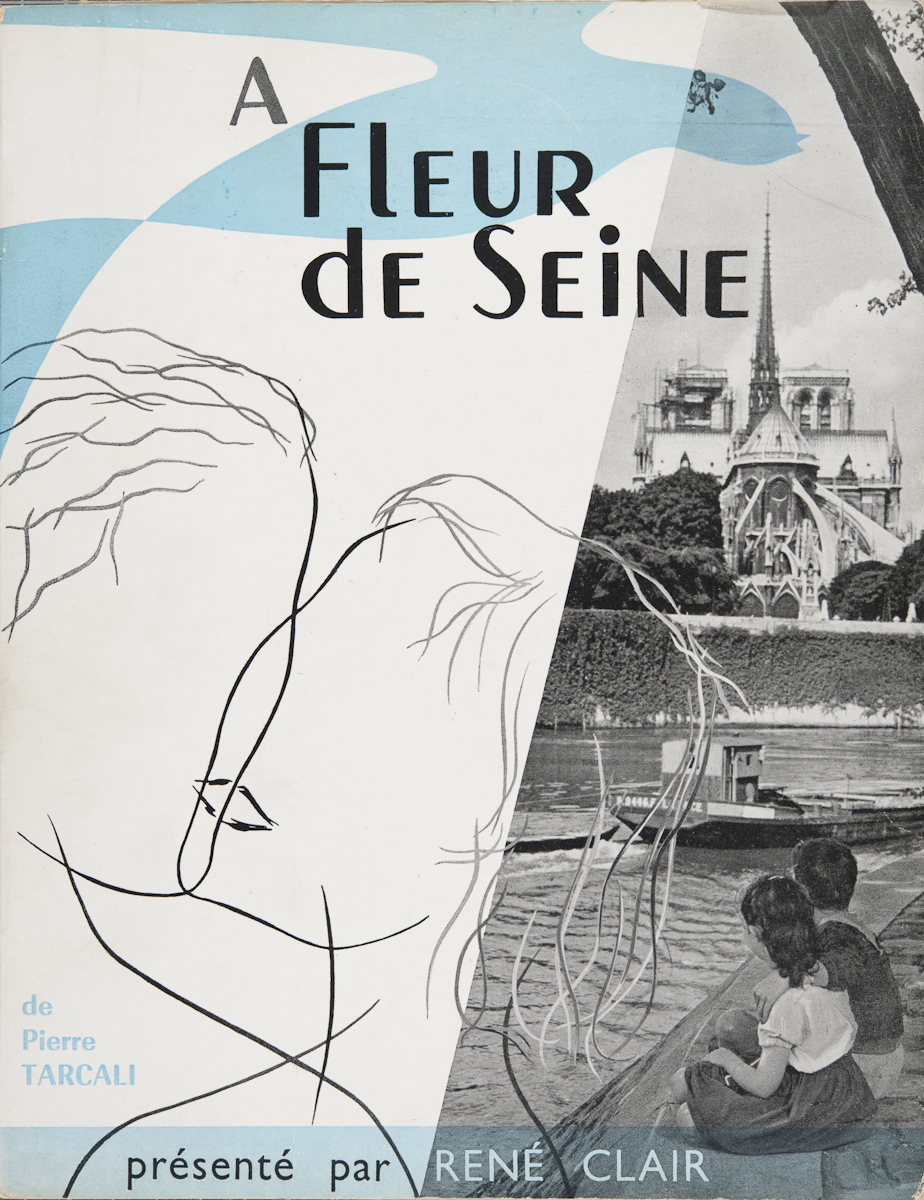
Doisneau was just one of a whole host of postwar photographers working in France who made the photobook a top priority. Enabling an examination of Doisneau’s career as a photobook creator, La Banlieue de Paris was followed up by Les parisens tels qu’ils sont (1954, acquired in a first edition), with a preface by the journalist of the Parisian streets, Robert Giraud and writer Michel Ragon. A year later Instantanés de Paris (1955, acquired in a large-size first edition with an intact acetate cover and a peface by Cendrars) presented 148 black and white photographs organised, as Doisneau preferred, into groups or smaller photo-essays, entitled thematically: Love, Work, Children, Gazes … . These three books are joined by the key photobook by his French colleague in the Rapho agency and the Groupe des XV, Willy Ronis, whose photobook Belleville-Menilmontant is seen in its first edition of 1954 with preface by the photo-critic who coined the idea of the ‘social fantastic’ to describe many of the photographs in these books conjoining the real with the surreal and poetic, Pierre MacOrlan, 1954. The Library has also bought this book in its fourth, “definitive” edition of 1999 with a different selection of images by Ronis and a text by the detective writer, Didier Daeninckx. The significance of the writers and poets whose texts frame the photobooks is further emphasised in the collaborative photobook overseen by screenwriter Pierre Tarcali and introduced by René Clair, the sweetly-titled A Fleur de Seine (1954); and the preface by the Surrealist associate, poet and scriptwriter for Marcel Carné’s great classic film, Les Enfants du Paradis (1945), Jacques Prévert, for Peter Cornelius’s Couleur de Paris (1961).
Natalie Adamson is a scholar of twentieth-century culture in France. She is Senior Lecturer in the School of Art History, where she teaches Honours and postgraduate classes on interwar modernist photography in Europe and postwar art and politics in France.
[...] second of a two-part series, by Dr Natalie Adamson, highlighting some recent acquisitions in support of the new Photographic [...]
This is a wonderful entry - I love Moi Ver, thank you for posting this.
you're welcome, glad you enjoyed it!
[…] noted elsewhere on this blog, the collection includes a cracking selection of books on Paris, a number of important inter-war works, and a first edition of Robert Frank’s Les […]